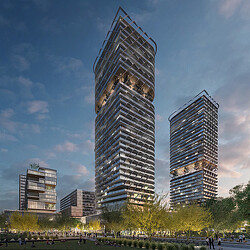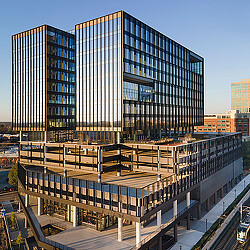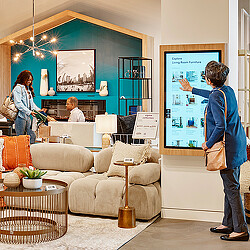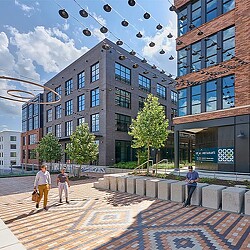How Journey Mapping Shapes Design Opportunities for the User
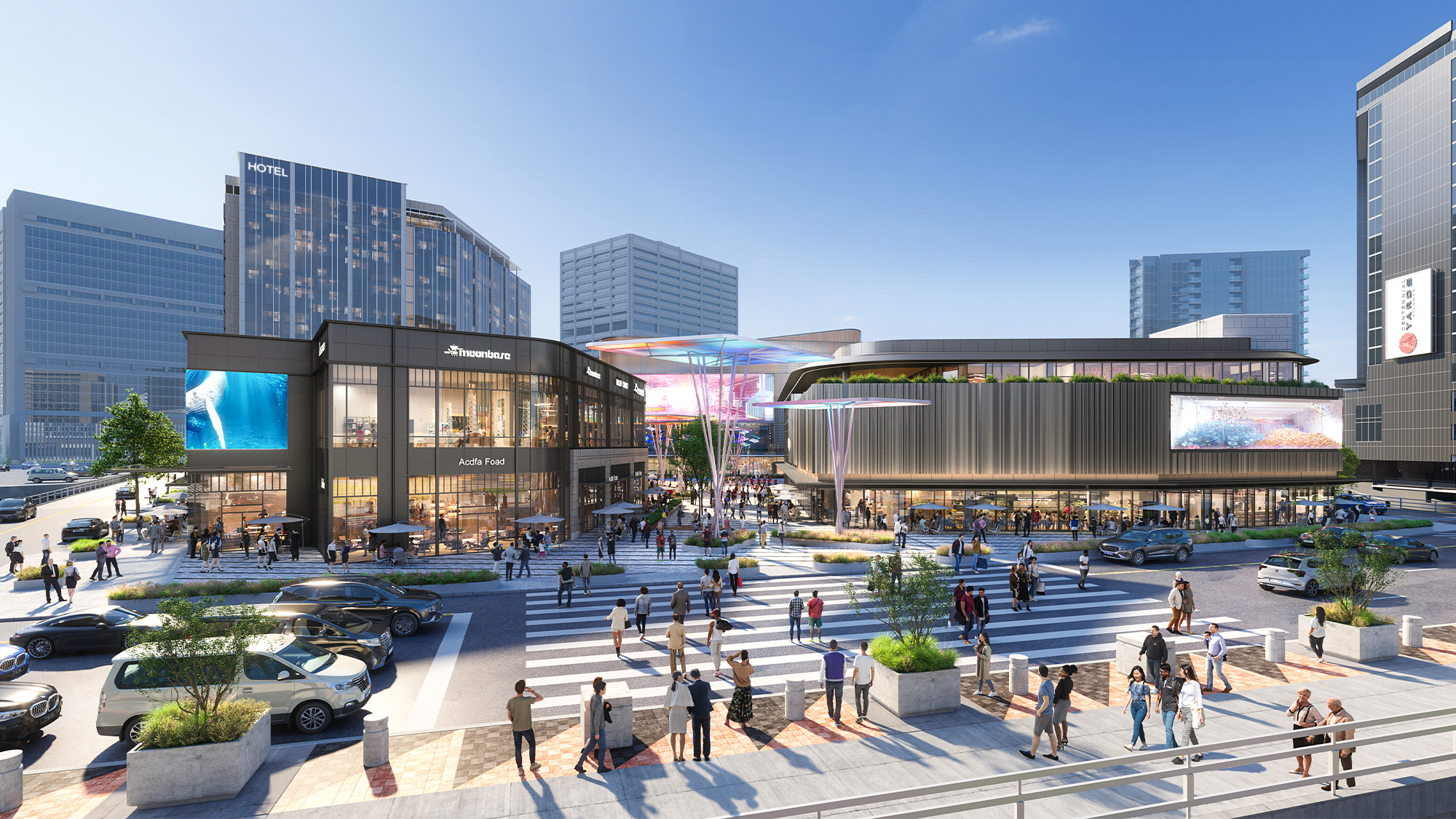
Journey mapping is more than a tool. It helps teams visualize how users move through systems, spaces, and services over time, capturing not just what users do, but how they feel, what they expect, and where they encounter friction or delight. This emotional and behavioral insight is essential for designing experiences that resonate.
Early-stage journey mapping is especially valuable. Because the user experience is rarely linear, it is critical to understand at the outset to guide design decisions. When applied before programming is defined, it allows teams to uncover needs, challenges, and shape experience strategies that are empathetic and future-ready.
In today’s competitive landscape, organizations are rethinking how they engage users across the entire journey, not just at the point of interaction. Whether it’s a shopper navigating a flagship store or a fan attending a game, mapping the journey helps designers choreograph seamless, meaningful, and memorable experiences.
Early-stage journey mapping benefits
Journey mapping in design thinking is the practice of visually plotting a user’s experience across time, touchpoints, and emotions. It reveals a user’s actions, motivations, feelings, and reactions helping to identify key pain points and areas for improvement.
Why start early?
- To form an insight-rich foundation: An early-stage journey map captures raw, unfiltered user behaviors to reveal needs and expectations before solutions bias the view.
- To create an adaptable framework: Conducting research early helps build a flexible structure that can evolve as new data emerges, enabling further refinement and responsiveness.
- To lay the groundwork for innovation: Early benchmarks can surface unmet needs and help spark breakthrough ideas.
Key methodologies include:
- User Journey Maps: Highlight key moments and decision points across time and touchpoints.
- Experience Blueprints: Layered frontstage and backstage interactions to align operational flows with the user experience.
- Personas: Tailored experience strategies designed for specific user types, contexts, and behavioral drivers.
Use Case: Designing for Seamless Retail Experiences
In retail and consumer environments, journey mapping helps decode everyday choices, from browsing and purchasing to post-sale engagement. It reveals the micro-moments that shape preferences, loyalty, and connection, and creates new opportunities to enhance the shopper’s experience.
Opportunities:
- Personalization based on emotions and behavior patterns, resulting in higher conversion rates and deeper brand loyalty.
- Seamless transitions between digital and physical touchpoints, increasing dwell time and reducing friction.
- Intuitive, proactive environments that anticipate user needs, streamlining the decision-making process through predictive cues and service.
The Shopper Journey:
It starts with mapping the high-level steps to uncover barriers, prioritize key engagement moments, and activate opportunities across the journey

The Shopper Journey:
It starts with mapping the high-level steps to uncover barriers, prioritize key engagement moments, and activate opportunities across the journey
Retail is no longer just about transactions. It’s about transformation. When designed with empathy and intention, these environments become places of belonging, where every touchpoint reflects the users’ behaviors, emotions, and expectations. Retail spaces come alive when they anticipate desire, foster connection, and choreograph care at every touchpoint.
Use Case: Elevating the Sports Fan Experience
Stadiums, like theme parks, are emotionally charged arenas of experience. From ticket purchase to post-game reflection, the fan journey is multi-sensory and deeply personal. Journey mapping helps teams design experiences that foster loyalty, excitement, and a sense of community.
Opportunities:
- Enhancing game-day logistics: parking, entry, seating, and concessions, streamlining operations, reducing friction for fans and staff.
- Creating immersive pre- and post-game moments that extend the experience, increase sales, and drive higher foot traffic through multi-sensory activations.
- Personalizing content across digital platforms, boosting engagement, dwell time, and deepening brand loyalty through storytelling.
The Fan Journey:
What are our top areas to impact guest engagement?
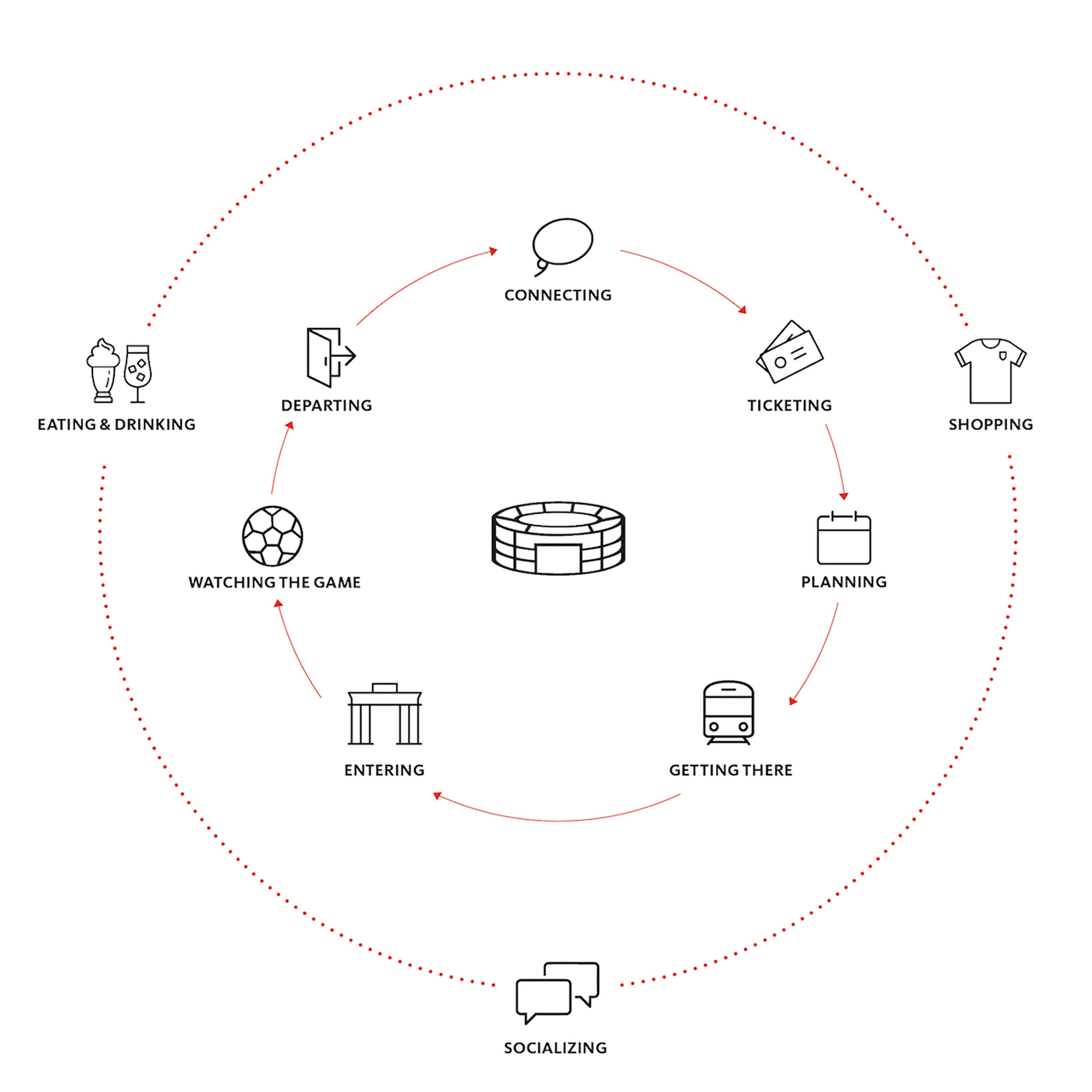
The Fan Journey:
What are our top areas to impact guest engagement?
Fans don’t just attend games, they live them. Journey mapping reveals the emotional highs and friction points that shape their memories. It helps teams move beyond performance-based loyalty to experience-based connection.
Use Case: Building Smarter, More Connected Mixed-Use Environments
Urban journey mapping explores how people navigate public spaces, transit systems, and civic services. It’s a tool for designing cities that feel intuitive, inclusive, and adaptive.
Opportunities:
- Orchestrating mobility and user transitions for residents, employees, and shoppers, resulting in smoother flows and reduced congestion.
- Embedding sustainability infrastructure into everyday interactions, activating climate- positive choices.
- Creating micro-moments of belonging and adapting to diverse needs, elevating accessibility and usability for all users.
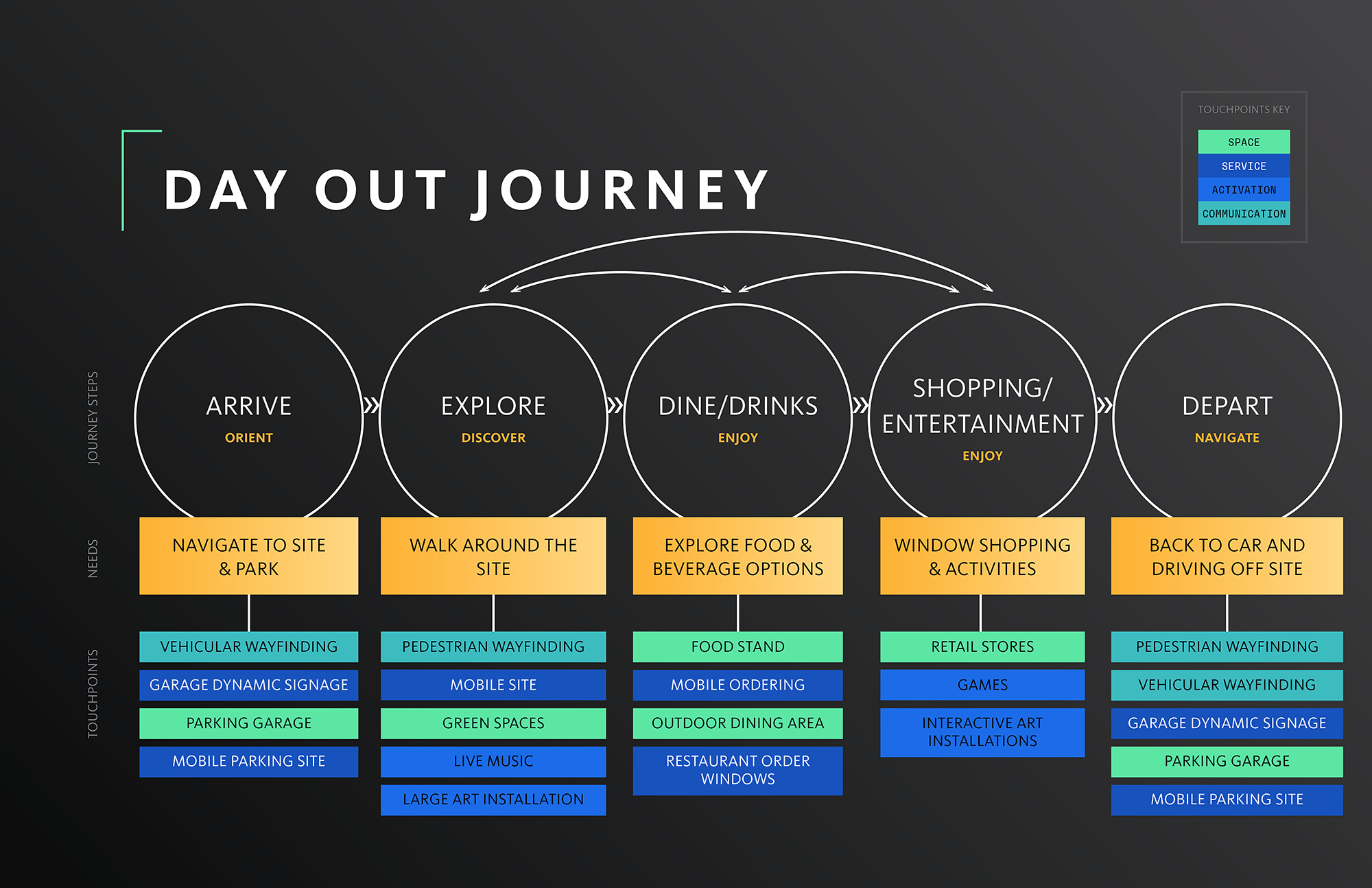
Mixed-use districts pulse with diversity of people, patterns, and purposes. Journey mapping helps translate this complexity into environments that feel grounded, navigable, and designed with empathy at their core.
Across retail, sports, and mixed-use districts, journey mapping empowers organizations to shift from reactive fixes to anticipatory design. It ensures that every touchpoint — from physical or digital, frontstage or backstage — is part of an experience ecosystem. This approach drives measurable outcomes, including increased dwell time, higher conversion rates, greater foot-traffic and usage rates, and stronger repeat engagement. In a landscape where experience defines value, journey mapping serves as the bridge between strategic intent and operational impact, translating user needs into revenue, accessibility into retention, and complex environments into intuitive flows.
For media inquiries, email .






